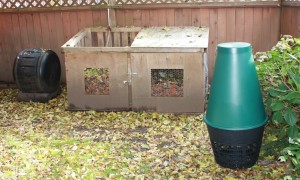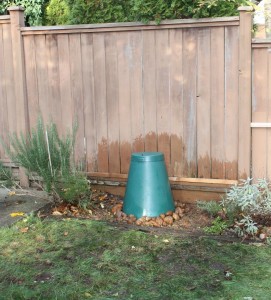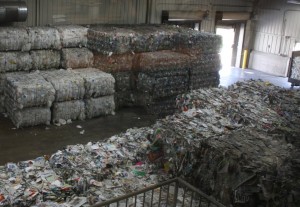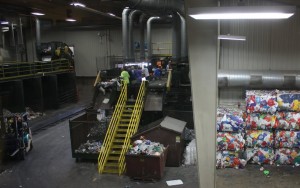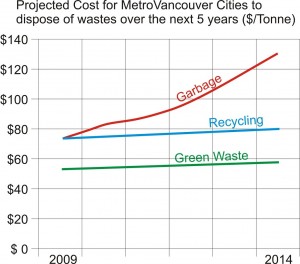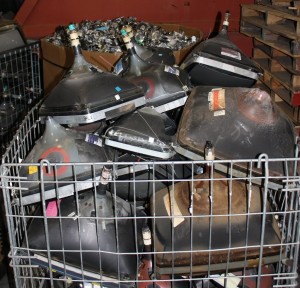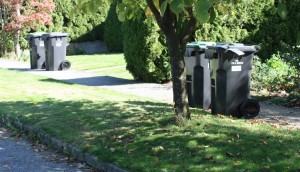Green Cone installed
I woke up this morning with an extra hour in the pocket, and found the sun shining. A day for raking leaves, cleaning up the garden, and installing a Green Cone.
As is increasingly common for those fortunate enough to have a yard, I have a compost system. Mine may be a little more complex than others, as you may see here:
In the centre is the two-box compost I built a couple of years ago with some wood and chicken wire. One side is always receiving new materials (non-stinky kitchen scraps, coffee grinds, vegetable cuttings, leaves, grass clippings, a bit of paper, etc), while the other sits fallow, letting the worms do their thing. The idea is that the worms and other soil-making invertebrates will migrate to wherever there is food, moisture, oxygen and warmth. I have an aerator stick I use to stir the fallow side occasionally (to keep things aerobic), and when the worms start to run out of food, they migrate over to the fresh food side.
Every couple of weeks, I take several pounds out of the bottom of the fallow side and stick it in the rolling composter to the right. I add water if it looks like it might need it, worms from the active side if the population looks small, and some fresh (by “fresh”, I mean really rotten and nasty) veggie food to get the worms going. As this bin gets stirred every couple of days, and it is a closed cell, the composting kicks up a notch. What comes out of it after a couple of weeks is nicely textured, and ready to go to the garden. As a bonus, the extra liquid collects in the reservoir underneath, and can be cut for use to fertilize indoor plants. Yum.
Often the production of compost exceeds my garden needs, so I have a little soil pile on the side, wrapped in plastic to keep the rain from leaching all the good nutrients out.
Then there is the space-ship-looking thing over to right. The Green Cone.
I found a fairly sunny part of the back yard, not “full sun”, but warm enough that the rosemary seems happy there, and close enough to the back door to be convenient, but hopefully about 2 fruit-fly-flights from the house, just in case. The first step of installation is digging a 2 ft deep hole with a radius of about 2 ft.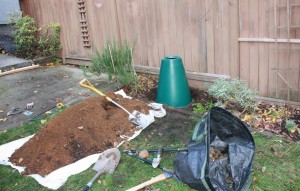
Back-of-the-envelope says 6 cubic feet of dirt weighs about 600lbs. This step took more time than I expected, and gave me a lot of time to contemplate a greater respect for gravediggers, and how mobsters in movies who tell people to dig their own graves must have a lot of spare time on their hands… but I digress.
Once the hole is dug, the rest of the installation took only a few spins of a phillips screwdriver. Once in the ground, the cone is much smaller than it looks prior to installation, much less like a spaceship, and doesn’t look too bad in the garden.
